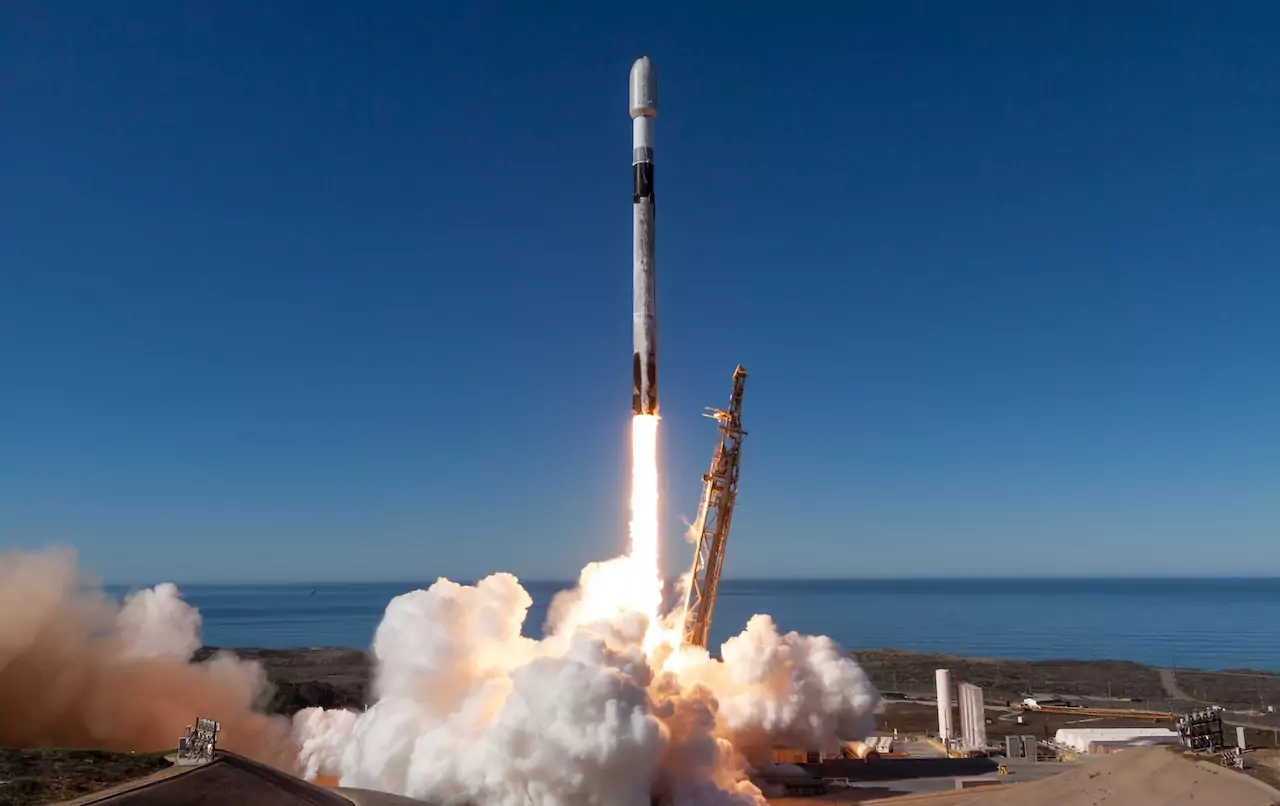Endless Sky and Ascend, the 15th and 16th commercial missions of Italian space company D-Orbit’s ION Satellite Carrier orbital transfer vehicle (OTV), were launched on 14 January 2025.
The two OTVs were launched on SpaceX’s Transporter-12 mission from Space Launch Complex 4 (SLC-4E) at Vandenberg Space Base in California. One hour and seven minutes after launch, the first vehicle, ION SCV Amazing Antonius, was released into a 510km helium-synchronous orbit, followed four minutes later by the second vehicle, ION SCV Eminent Emmanuel.
With the launch of the Endless Sky and Ascend missions, we are proud to reinforce the growing confidence our customers have in D-Orbit,’ said Renato Panesi, co-founder and Chief Commercial Officer of D-Orbit. These missions further demonstrate the versatility and reliability of our ION Satellite Carrier, and we look forward to laying the groundwork for even more innovative solutions in the years to come.
The ION Satellite Carrier is a versatile spacecraft capable of carrying and releasing satellites in separate orbital slots. It can also accommodate third-party payloads, including innovative technologies, research experiments and instruments requiring in-orbit testing. In addition, ION can support edge computing and space cloud services, providing satellite operators with advanced in-orbit storage and computing capabilities.
The D-Orbit mission control team is now conducting launch and early orbit phase (LEOP) activities, preparing the ground for the next operational phase.
The two IONs host several satellites and payloads on board: PoSAT-2, a 3U CubeSat developed by LusoSpace, the first satellite in LusoSpace‘s 12-satellite constellation, PoSAT-2 aims to revolutionise maritime connectivity with significantly higher bandwidth than current Automatic Identification System (AIS) applications, enhanced data integrity and advances in maritime communication and security; LOGSATS-2, developed by EOS Orbit, is Thailand’s first 3U CubeSat to reach space. The satellite is equipped with a LoRa Gateway service for space-based IoT communication and an ADS-B receiver for advanced aviation monitoring. LOGSATS-2 is also equipped with a high-resolution camera for Earth observation and a Software-Defined Radio (SDR) for adaptive communications; K2 Space Component Mission aims to validate in-orbit the bus components designed in-house by K2 Space that will support the innovative capabilities of the K2 Satellite platform. These components include an on-board computer, a motor controller and a reaction wheel; Hitchhiker 1 is the first mission of French shared-mission operator SpaceLocker specialising in simplified payload hosting. Its container and interface technology provides a unique solution to simplify the integration and operation of payloads. Carrying a container hosted on the ION deck, Hitchhiker 1 offers simplified and faster access to space for three users from around the world, demonstrating innovative technologies in orbit; Mission Impossible: 2 (MI:2), a TRL11 mission. MI:2 comprises four Fovea cameras and SAVER, a powerful on-board computer designed to provide low-delay, full-motion video of all the vehicle’s dynamic space operations; SWIMMR, the Space weather innovation, measurement, modelling and risk programme is a five-year, £20 million investment by the UK Research and Innovation (UKRI) Strategic Priorities Fund, which will improve the UK’s capabilities for space weather monitoring and prediction, focusing on space radiation. The SWIMMR Core mission is the second mission of the SWIMMR S1 ‘Improved in-situ radiation measurements for space and aviation’ project, carried out by Space Physics and Operations Division of the Science and Technology Facilities Council (STFC) RAL Space. The mission will consist of a HardPix radiation monitor developed by the Czech Technical University, integrated on an ION Satellite Carrier to provide radiation data to the Met office space weather operations centre, from altitudes between 330 km and 1200 km; DATA DOT, from SpaceDOTS, is the first space environmental data collection unit that collects critical data on environmental events that directly influence spacecraft design, cost, operations and ultimately mission success. Understanding these dynamic environments is critical to designing smarter, safer and more cost-effective missions; Alba Orbital Ltd’s AlbaPod 6P serves as a deployer for PocketQube 6P satellites. PocketQubes, which typically have a cube shape with 5 cm sides and a maximum mass of 250 grams, utilise commercial off-the-shelf components for electronics. AlbaPod 6P aims to provide a reliable release platform for these small satellites, enhancing the scope of what can be achieved with small-scale space resources. The deployer will host a number of PocketQubes, each with its own research objectives; AI-eXpress (AIX), a project by Planetek with the collaboration of D-Orbit and AIKO, is co-funded by the ESA European Space Agency’s Philab Incubed programme that uses advanced technologies such as artificial intelligence and blockchain in space to improve the capabilities of satellites in terms of responsiveness and low-latency information delivery. AIX provides a hybrid edge/cloud ecosystem on a Low Earth Orbit (LEO) platform equipped with Earth observation payloads, on-orbit deployable CubeSats and a software framework that manages on-board sensors and resources. The first mission, launched today and named AI-eXpress 1 Precursor (AIX-1p), is designed to test and validate the core elements of software services (data processing and execution) directly in space. These functionalities form the backbone of the ‘satellite-as-a-service’ model. AIX-1p is the first step towards the creation of a space ‘App Store’, offering an easier and innovative way to access space resources.
Translated with www.DeepL.com/Translator (free version)
On another port of the Transporter-12 mission, D-Orbit also launched four satellites from Plan-S Satellite and Space Technologies (Connecta IOT-5,-6,-7,-8), two from Spire (Lemur 2 Star Fox and Lemur 2 Arianna), two from FOSSA Systems (FO018 and FO019) and one from Almagest Space (Elevation-1). The mission also includes four ISISPACE Quadpacks (carrying ISISPACE customer satellites).
The two IONs will also carry additional satellites and payloads from undisclosed customers.
D-Orbit will launch its first ION in September 2020. This launch brings the company’s total number of payloads into space to nearly 180.
ALL RIGHTS RESERVED ©
